GALLERY OF OUR WORK
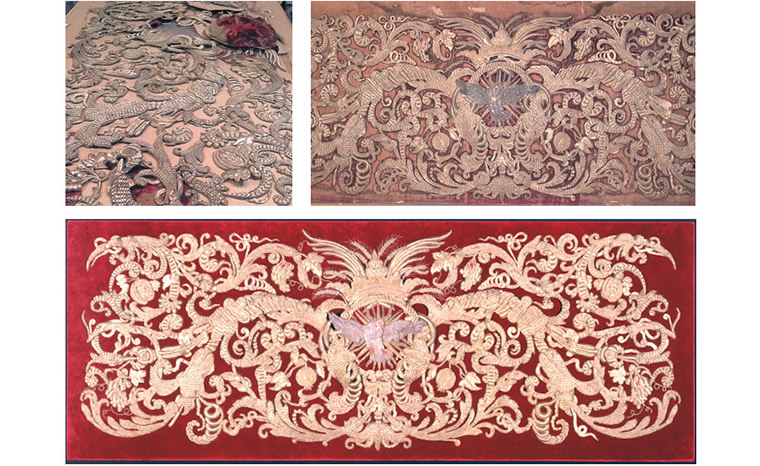
The silk velvet backing on this 18th c. antependium (raised metallic embroidered alter frontal) had rotted and torn over time. The embroidery was unstitched. A new mount was covered with canvas and new silk velvet material. The metallic embroidery was cleaned and hand stitched to the mount.
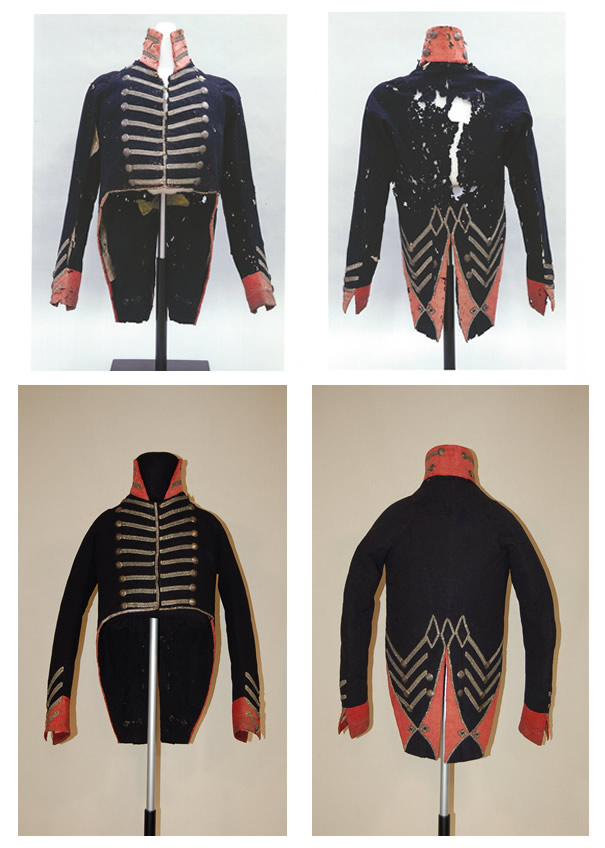
Over 500 hours were spent in the conservation of this rare officer's coatee, worn during the War of 1812. Underlays of new custom dyed wool materials were hand stitched into the coat to support and stabilize the moth damaged areas.


The shattered silk bars were heat fused to a support fabric to stabilize the damage on this 18 star flag c. 1812. The light damaged areas on the dark blue cotton canton were color enhanced. The flag was hand stitched to a mount and framed.
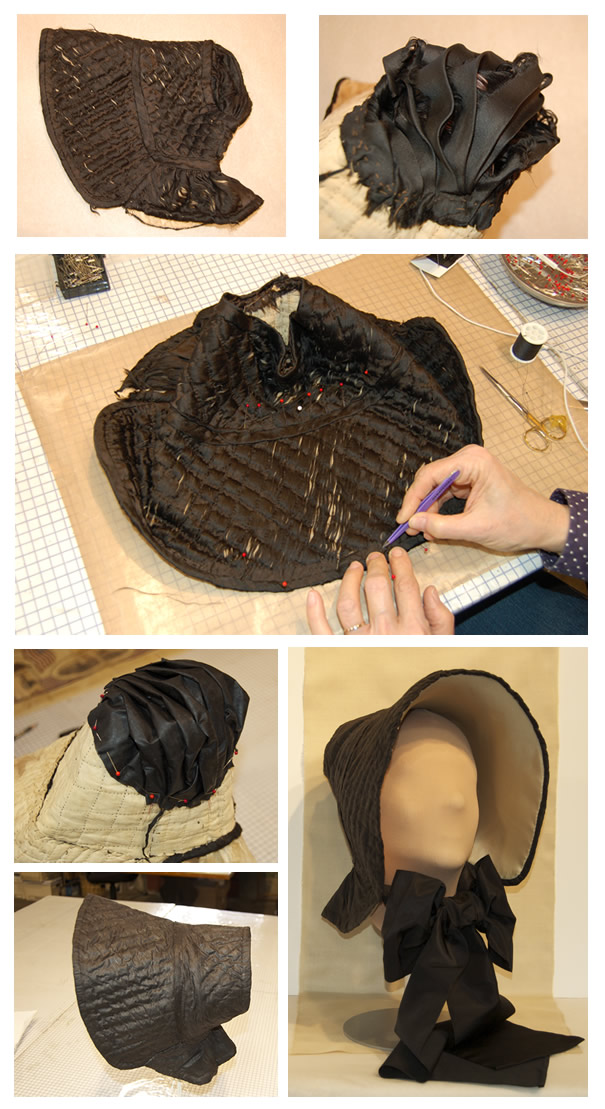
This bonnet, worn by Lincoln assassination conspirator Mary Surratt, was stabilized by heat seal consolidation, and mounted for exhibition.
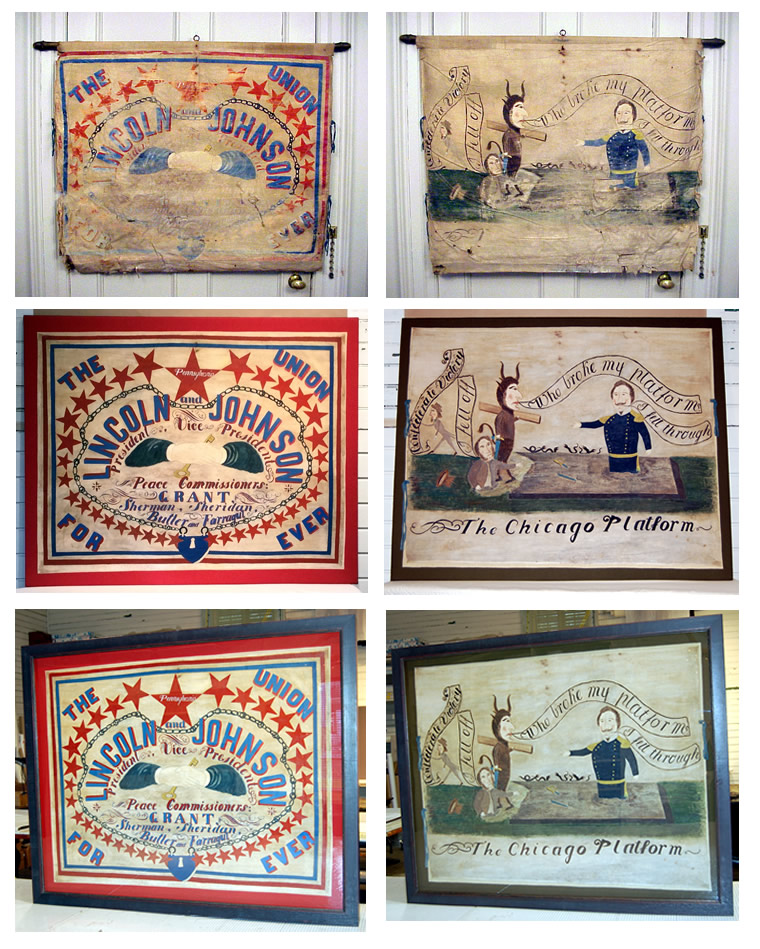
After dis-assembly, each side of this double faced 1864 presidential campaign banner was stabilized separately. The fabric panels were relined, the paintings were restored, and both banners were framed in a double faced frame.
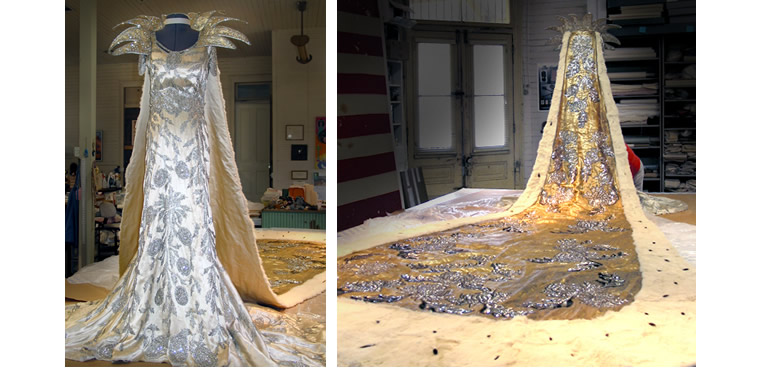

Historic Carnival costumes including queen's gowns and mantles are cleaned and conserved before exhibition.
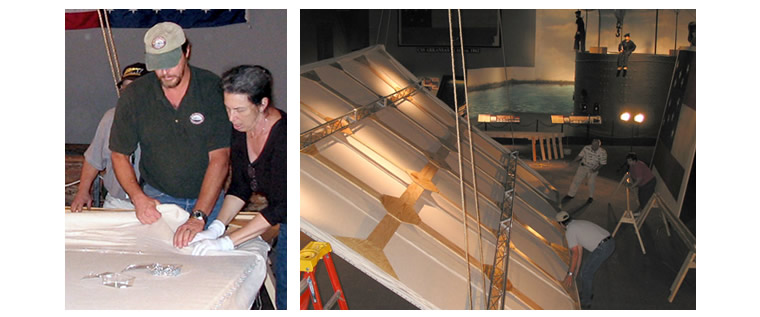
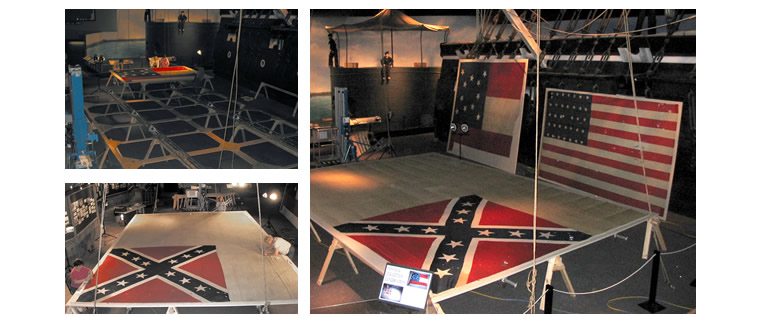
The huge size of these Civil War Naval flags made on site treatment necessary. Support frames were built and covered with fabric. The flags were hand stitched to the mounts.

This Civil War Confederate artillery officer’s frock coat was badly moth damaged. New wool material was dyed to match and used to underlay the damaged areas. Holes were hand stitched to the support material to stabilize the damage.

This Confederate butternut wool shell jacket was badly damaged and missing large sections of material. Conservation of the jacket required its disassembly, underlaying each piece of the jacket with new wool material, stitching the damage to the underlay, and reassembly of the jacket.


This Civil War kepi was cleaned and re-blocked. The leather crown inset was reformed and stabilized.
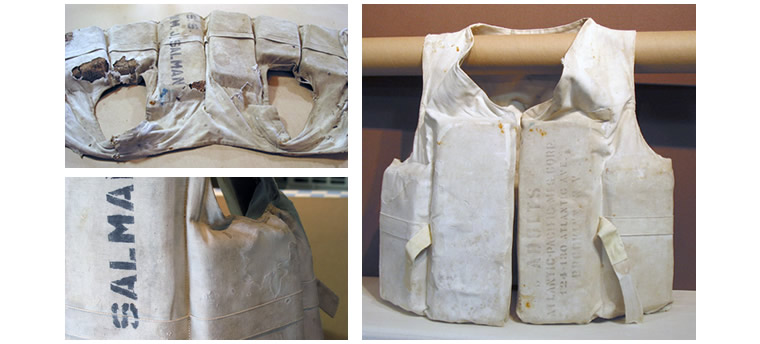
Damage to the outer covering of this cork lined WW II life vest was stabilized with insets of cotton material fused to the vest.

This WWII map satchel was damaged by water flooding its display case. Mold was removed from the leather, which was then cleaned and treated with leather dressing. The canvas bag was cleaned to remove mold and dirt.

This child's jacket survived Hurricane Katrina. It was cleaned for inclusion in a museum exhibition.

This political silk watch ribbon was torn into three pieces. After cleaning, the ribbon was reassembled and fused to a silk underlayer.

This fire damaged 19th c. beaded footstool was cleaned to remove surface soot.
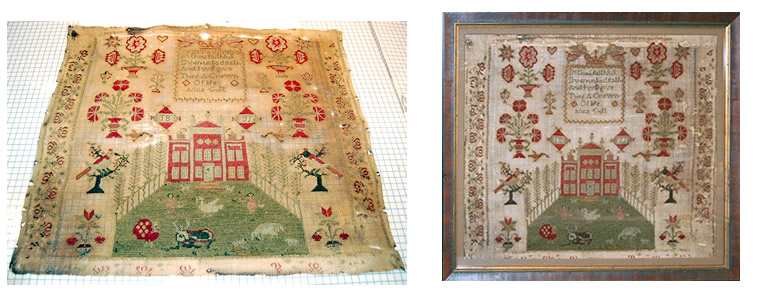
This early schoolgirl sampler was cleaned and stitched to a new linen backing to stabilize the damaged areas before mounting and framing.


The torn corner of this carpet was restored. A new foundation was hand woven into the carpet. The missing pile was re-knotted and clipped.

The wool Navajo carpet was rust stained after flooding. The rust was removed, and the carpet was wet cleaned.


A large hole was torn in this Chinese silk embroidered screen. A patch was embroidered to replicate the missing area. It was inset and further embroidered to integrate the patch into the panel.

Torn areas in the border of this 19th c. wool and silk tapestry were rewoven. A new linen backing and Velcro strip for hanging were stitched to the tapestry.
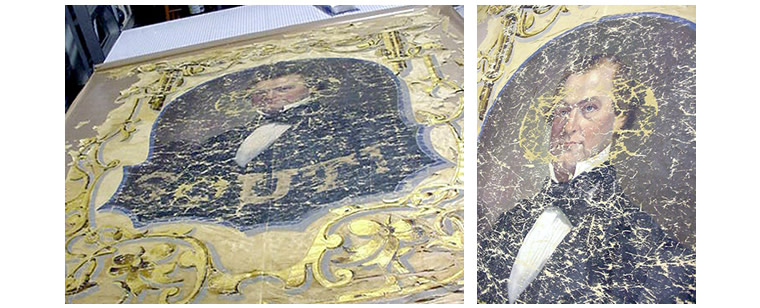
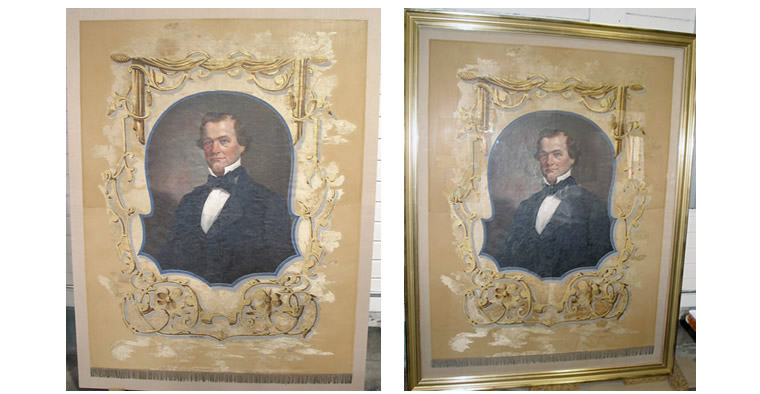
The painting on this shattered pre-Civil War silk presentation banner was restored. The banner was reassembled and fused to a support material. It was hand stitched to a stretcher mount and framed.
